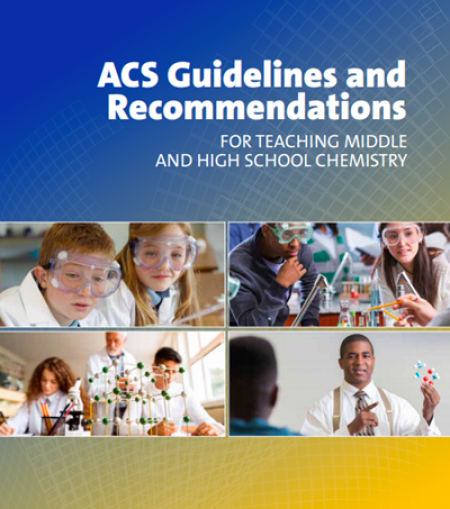Middle & High School Chemistry Guidelines
ACS Guidelines and Recommendations for Teaching Middle and High School Chemistry
One of the goals of the American Chemical Society (ACS) is to support excellence in education by fostering the development of innovative, relevant, and effective chemistry and chemistry-related education. In the spirit of this commitment, this is the updated and expanded version of the 2012 ACS Guidelines and Recommendations for Teaching High School Chemistry.
To broaden their reach and relevance, these guidelines also consider the needs of middle school instruction, where chemistry is usually connected to and taught as physical science. Although many of the topics included at the middle school level are not addressed in as much detail as at the high school level, building a chemistry foundation and integrating it with other branches of science serve students well as they progress to high school chemistry and other science courses.
Expected Student Outcomes
In an outstanding curriculum students will:
- learn how to communicate scientific ideas.
- be exposed to and engage in activities that involve problem solving and reasoning with chemical concepts to help them develop their scientific literacy skills.
- investigate and verify scientific concepts and principles by analyzing data, whether they are collected through their own experiments or gathered from other reliable sources.
- understand the interactions of matter at the macroscopic and particulate levels, as well as symbolically.
These essential elements of a curriculum will help students make informed decisions about relevant scientific issues in their daily lives. In addition, the curriculum will instill a desire to further investigate the wonder, excitement, and dynamic nature of science.
The Classroom
Organize a learning environment that is student-centered and curriculum-driven.
The Laboratory
Learn how to set up laboratory spaces that mimic a professional scientific environment.
Core Concepts of Chemistry
Navigate the core concepts of chemistry based on recommended standards for middle school and high school students.
Safety
Explore a variety of tools to ensure your learning spaces, lesson plans, and materials are safe for you and your students.
Strategies
These strategies are written specifically for chemistry teachers and address the challenges of helping students reach their fullest potential in chemistry.
Professional Development & Training
Expand your knowledge to help students keep up with a changing world. Join a community of chemistry and physical science teachers.








